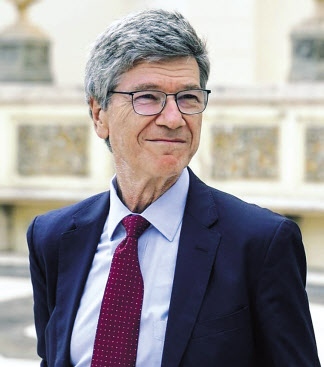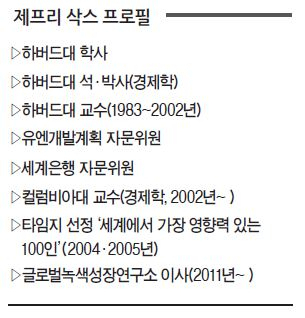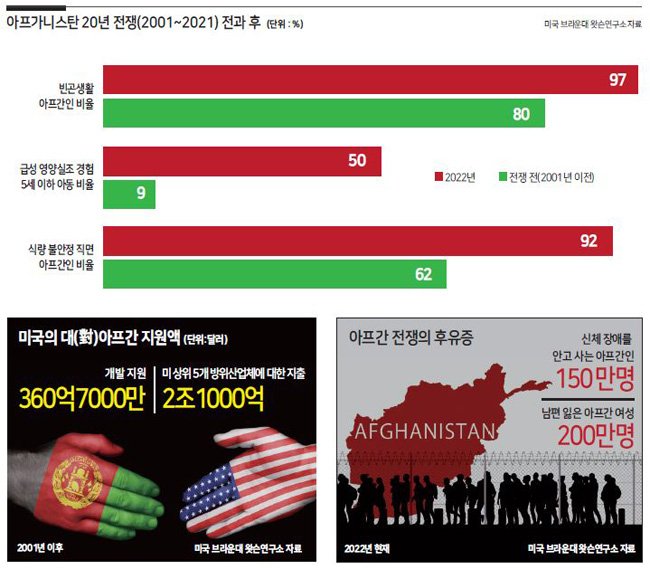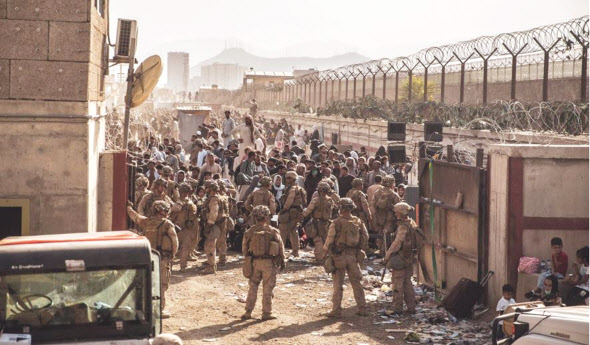이 기사는 해외 석학 기고글 플랫폼 '헤럴드 인사이트 컬렉션'에 게재된 기사입니다.
 |
| 미국 컬럼비아대 경제학과 교수 |

경제 발전의 가장 큰 적은 전쟁이다. 세계가 더 깊은 글로벌 분쟁으로 빠져든다면 경제에 대한 희망은 물론 우리의 생존 자체가 화염에 휩싸일 수 있다. 얼마 전 핵과학자회(BAS·The Bulletin of Atomic Scientists)는 지구 종말 시계(Doomsday Clock)를 자정 기준 90초 전으로 조정했다.
지난 2022년 세계 경제의 최대 패자는 우크라이나다. 국제통화기금(IMF)에 따르면 우크라이나 경제는 35%나 폭락했다고 한다. 우크라이나에서 벌어지고 있는 전쟁이 곧 끝나고 경제 회복이 다시 시작될 수도 있겠지만 이 모든 것은 우크라이나가 자국이 2014년 발발한 미국-러시아 대리전쟁의 희생양으로 현재의 어려움을 겪고 있다는 사실을 이해하느냐에 달려 있다.
미국은 2014년부터 나토(NATO·북대서양조약기구) 확장 및 러시아 약화라는 목표하에 우크라이나에 막대한 무기와 자금을 지원해왔다. 미국의 대리전은 보통 수년, 심지어 수십년 동안 이어지며 우크라이나와 같이 전장으로 이용되는 국가를 초토화시킨다.

미-러 대리전이 곧 끝나지 않는 한, 우크라이나의 미래는 암담하다. 우크라이나는 아프가니스탄의 끔찍한 경험에서 교훈을 얻어 이 전쟁이 장기적인 재앙이 되는 것을 막아야 한다. 베트남, 캄보디아, 라오스, 리비아 등에서 벌어졌던 미국의 또 다른 대리전에서도 교훈을 얻을 수 있다.
1979년부터 미국은 당시 러시아의 지원을 받고 있던 아프가니스탄 정부를 괴롭히기 위해 무자헤딘(이슬람주의 전사)에 무기를 지원했다. 지미 카터 전 대통령의 국가안보보좌관이었던 즈비그뉴 브레진스키가 이후 밝힌 것처럼 미국의 목표는 소련을 자극해 개입시킴으로써 소련을 값비싼 전쟁 속에 가두는 것이었다. 아프가니스탄이 ‘콜래트럴 데미지(Collateral damage·부수적인 피해)’를 입게 될 것이란 사실은 당시 미국 지도자들의 관심사가 아니었다.
1979년 미국의 바람대로 소련군이 아프가니스탄으로 진격해왔고, 전쟁은 1980년대까지 계속됐다. 그러는 동안 미국의 지원을 받던 반군 세력은 1980년대에는 알카에다를, 또 1990년대에는 탈레반을 조직했다. 소련을 겨냥한 미국의 ‘술책’이 역효과를 낳은 것이다.
2001년 미국은 알카에다 및 탈레반과 싸우기 위해 아프가니스탄을 침공했고, 이 전쟁은 2021년 미국이 마침내 철수할 때까지 20년 동안 계속됐다. 아프가니스탄에서 미국의 산발적인 군사작전은 여전히 계속되고 있다. 아프가니스탄은 폐허가 됐다. 미국은 군사비로 2조달러 이상을 지출했지만 아프가니스탄은 1인당 국내총생산(GDP)이 400달러 미만인 빈곤국가가 됐다. 미국은 2021년 아프가니스탄을 떠나면서 작별 ‘선물’로 아프가니스탄이 보유하고 있던 작은 외환보유액마저 동결시켜 아프가니스탄의 은행 시스템을 마비시켰다.

 |
| 미국이 치른 전쟁 가운데 최장 기간으로 기록된 아프가니스탄 전쟁에서 미 해병대가 2021년 8월 아프가니스탄 하미드 카르자이 국제공항에서 철수하는 동안 대피통제검문소에서 민간인들을 지원하고 있다(위쪽). 지난 24일로 전쟁 발발 1년이 넘은 우크라이나는 그야말로 잿더미로 변했다. 수도 키이우 외곽도시 이르핀의 주택가가 완전히 폐허가 된 모습에서 전쟁의 참상과 경제적 피해가 막대하다는 점을 느낄 수 있다. [로이터·AP] |
우크라이나에서의 대리전은 9년 전 미국이 당시 우크라이나 대통령이었던 빅토르 야누코비치 탄핵을 지원하면서 시작됐다. 미국 관점에서 야누코비치의 죄목은 우크라이나(그리고 조지아)를 나토에 가입시키고자 하는 미국의 바람에도 우크라이나의 중립을 유지하려고 한 것이었다. 미국의 목표는 흑해 연안지역에서 나토 국가들로 러시아를 둘러싸는 것이었다. 이 목표를 달성하기 위해 미국은 2014년부터 우크라이나에 대대적으로 무기와 자금을 지원해왔다.
미국 측 주도자들은 그때나 지금이나 같다. 2014년 미국 정부의 우크라이나 관련 핵심 인물은 당시 국무부 차관보였던 빅토리아 눌런드였는데 지금은 바이든 행정부에서 국무부 차관을 맡고 있다. 2014년 당시 눌런드가 긴밀하게 협력하던 인물은 현재 조 바이든 대통령의 국가안보보좌관인 제이크 설리번으로, 당시에는 부통령이었던 바이든을 위해 같은 역할을 맡고 있었다.
하지만 미국은 우크라이나의 두 가지 강력한 정치적 현실을 간과했다.
첫 번째는 우크라이나가 반(反)러시아 독립주의자들이 거주하는 서부와 러시아계 주민이 거주하는 동부 및 크림반도로 민족적·정치적으로 깊이 분열돼 있다는 것이다.
두 번째는 우크라이나의 나토 가입은 러시아가 절대로 받아들일 수 없는 사안이라는 점이다. 러시아는 우크라이나를 나토에 편입시키려는 미국의 시도를 저지하기 위해 끝까지 싸울 것이고 필요하다면 전쟁을 더 확대할 것이다.
미국은 계속해서 나토가 방어적 동맹이라고 주장한다. 그러나 나토는 1999년 코소보를 세르비아로부터 독립시키기 위해 78일 동안 러시아의 동맹국인 세르비아를 공습했고, 그 후 미국은 코소보에 거대한 군사기지를 세웠다. 이와 유사하게 나토군은 2011년 친(親)러시아 성향인 무아마르 카다피를 실각시켰고, 그 후 리비아는 10년 동안 혼란을 겪었다. 러시아는 결코 우크라이나의 나토 가입을 용인하지 않을 것이다.
2021년 말, 블라디미르 푸틴 러시아 대통령은 미국에 세 가지 요구 사항을 제시했다.
구체적으로 ▷우크라이나는 중립을 지키며 나토에 가입하지 않는다 ▷크림반도는 러시아 영토로 남는다 ▷돈바스 지역은 제2차 민스크협정(Minsk II)에 따라 자치지구로 인정한다는 내용이다.
하지만 ‘바이든-설리번-눌런드’ 팀은 나토 확장에 대한 협상을 거부했다. 바로 이 동일한 팀이 야누코비치 탄핵을 지지한 지 8년 만이었다. 미국이 푸틴의 협상 요구를 단호히 거절하자 러시아는 2022년 2월, 우크라이나를 침공했다.
2022년 3월, 볼로디미르 젤렌스키 우크라이나 대통령은 우크라이나가 미-러 대리전의 희생양으로 이 끔찍한 곤경을 겪고 있다는 사실을 이해하는 것 같았다. 젤렌스키는 우크라이나가 중립국으로 남을 것을 공개적으로 선언하며 안전 보장을 요구했다. 또한 크림반도와 돈바스 지역에 대해서는 특별한 처우가 필요할 것이라고 공개적으로 인정했다. 당시 이스라엘 총리였던 나프탈리 베넷이 터키(지금의 튀르키예)와 함께 중재자 역할을 맡았다. 러시아와 우크라이나는 거의 합의에 도달한 것처럼 보였다. 하지만 베넷이 최근 밝힌 바와 같이 이 평화 프로세스를 막은 것은 미국이었다.
이후 전쟁은 확대됐다. 미국 탐사보도 기자인 시모어 허시에 따르면 미군은 지난해 9월 노르트스트림(Nord Stream) 송유관을 폭파했다. 더 최근에는 미국과 동맹국들이 우크라이나에 탱크, 장거리 미사일 및 필요 시 전투기 등을 지원하기로 약속했다.
평화를 위한 기반은 명확하다. 우크라이나는 나토에 가입하지 않은 중립국이 된다. 크림반도는 1783년부터 그래왔던 것처럼 러시아의 흑해 함대의 본거지로 남는다. 돈바스 지역에 대해서는 영토 분할, 자치권 보장, 휴전선 설정 등의 실질적인 해결책을 찾는다. 무엇보다 중요한 것은 전투를 중단하고 러시아군은 우크라이나에서 철수하며, 우크라이나의 주권은 유엔 안전보장이사회와 다른 국가에 의해 보장된다. 사실 이 합의는 2021년 12월이나 2022년 3월에 나올 수도 있던 것이다. 특히 무엇보다도 우크라이나 정부와 국민은 러시아와 미국에 더는 우크라이나를 대리전의 전장으로 이용하는 것을 거부한다고 말해야 한다. 내부적 분열이 깊은 가운데 민족적으로 분열된 양측 진영 모두 외부 세력이 문제를 해결해줄 것이라고 믿기보다는 평화를 위해 스스로 노력해야 한다.
제프리 삭스 미국 컬럼비아대 교수
What Ukraine Needs to Learn from Afghanistan
Jeffrey D. Sachs
The greatest enemy of economic development is war. If the world slips further into global conflict, our economic hopes and our very survival could go up in flames. The Bulletin of Atomic Scientists just moved the hands of the Doomsday Clock to a mere 90 seconds to midnight.
The world’s biggest economic loser in 2022 was Ukraine, where the economy collapsed by 35 percent according to the International Monetary Fund. The war in Ukraine could end soon, and economic recovery could begin, but this depends on Ukraine understanding its predicament as victim of a US-Russia proxy war that broke out in 2014.
The US has been heavily arming and funding Ukraine since 2014 with the goal of expanding NATO and weakening Russia. America’s proxy wars typically rage for years and even decades, leaving battleground countries like Ukraine in rubble.
Unless the proxy war ends soon, Ukraine faces a dire future. Ukraine needs to learn from the horrible experience of Afghanistan to avoid becoming a long-term disaster. It could also look to the US proxy wars in Vietnam, Cambodia, Lao PDR, Iraq, Syria, and Libya.
Starting in 1979, the US armed the mujahadeen (Islamist fighters) to harass the Soviet-backed government in Afghanistan. As President Jimmy Carter’s national security advisor Zbigniew Brzezinski later explained, the US objective was to provoke the Soviet Union to intervene, in order to trap the Soviet Union in a costly war. The fact that Afghanistan would be collateral damage was of no concern to US leaders.
The Soviet military entered Afghanistan in 1979 as the US hoped, and fought through the 1980s. Meanwhile, the US-backed fighters established al-Qaeda in the 1980s, and the Taliban in the early 1990s. The US “trick” on the Soviet Union had boomeranged. In 2001, the US invaded Afghanistan to fight al-Qaeda and the Taliban. The US war continued for another 20 years, until the US finally left in 2021. Sporadic US military operations in Afghanistan continue.
Afghanistan lies in ruins. While the US wasted more than $2 trillion of US military outlays, Afghanistan is impoverished, with a 2021 GDP below $400 per person! As a parting “gift” to Afghanistan in 2021, the US Government seized Afghanistan’s tiny foreign exchange holdings, paralyzing the banking system.
The proxy war in Ukraine began nine years ago when the US Government backed the overthrow of Ukraine’s President Viktor Yanukovych. Yanukovych’s sin from the US viewpoint was his attempt to maintain Ukraine’s neutrality despite the US desire to expand NATO to include Ukraine (and Georgia). America’s objective was for NATO countries to encircle Russia in the Black Sea region. To achieve this goal, the US has been massively arming and funding Ukraine since 2014.
The American protagonists then and now are the same. The US Government’s point person on Ukraine in 2014 was Assistant Secretary of State Victoria Nuland, who today is Undersecretary of State. Back in 2014, Nuland worked closely with Jake Sullivan, President Joe Biden’s national security advisor, who played the same role for Vice President Biden in 2014.
The US overlooked to two harsh political realities in Ukraine. The first is that Ukraine is deeply divided ethnically and politically between Russia-hating nationalists in Western Ukraine and ethnic Russians in eastern Ukraine and Crimea. The second is that NATO enlargement to Ukraine crosses a Russian redline. Russia will fight to the end, and escalate as necessary, to prevent the US from incorporating Ukraine into NATO.
The US repeatedly asserts that NATO is a defensive alliance. Yet NATO bombed Russia’s ally Serbia for 78 days in 1999 in order to break Kosovo away from Serbia, after which the US established a giant military base in Kosovo. NATO forces similarly toppled Russian ally Moammar Qaddafi in 2011, setting off a decade of chaos in Libya. Russia certainly will never accept NATO in Ukraine.
At the end of 2021, Russian President Vladimir Putin put forward three demands to the US: Ukraine should remain neutral and out of NATO; Crimea should remain part of Russia; and the Donbas should become autonomous in accord with the Minsk II Agreement. The Biden-Sullivan-Nuland team rejected negotiations over NATO enlargement, eight years after the same group backed Yanukovych’s overthrow. With Putin’s negotiating demands flatly rejected by the US, Russia invaded Ukraine in February 2022.
In March 2022, Ukraine’s President Volodymyr Zelensky seemed to understand Ukraine’s dire predicament as victim of a US-Russia proxy war. He declared publicly that Ukraine would become a neutral country, and asked for security guarantees. He also publicly recognized that Crimea and Donbas would need some kind of special treatment.
Israel’s Prime Minister at that time, Naftali Bennett, became involved as a mediator, along with Turkey. Russia and Ukraine came close to reaching an agreement. Yet, as Bennett has recently explained, the US “blocked” the peace process.
Since then, the war has escalated. According to US investigative reporter Seymour Hersh, US agents blew up the Nord Stream pipelines in September. More recently, the US and allies have committed to sending tanks, longer-range missiles, and possibly fighter jets to Ukraine.
The basis for peace is clear. Ukraine would be a neutral non-NATO country. Crimea would remain home to Russia’s Black Sea naval fleet, as it has been since 1783. A practical solution would be found for the Donbas, such as a territorial division, autonomy, or an armistice line. Most importantly, the fighting would stop, Russian troops would leave Ukraine, and Ukraine’s sovereignty would be guaranteed by the UN Security Council and other nations. Such an agreement could have been reached in December 2021 or in March 2022.
Above all, the Government and people of Ukraine would tell Russia and the US that Ukraine refuses any longer to be the battleground of a proxy war. In the face of deep internal divisions, Ukrainians on both sides of the ethnic divide would strive for peace, rather than believing that an outside power will spare them the need to compromise.








